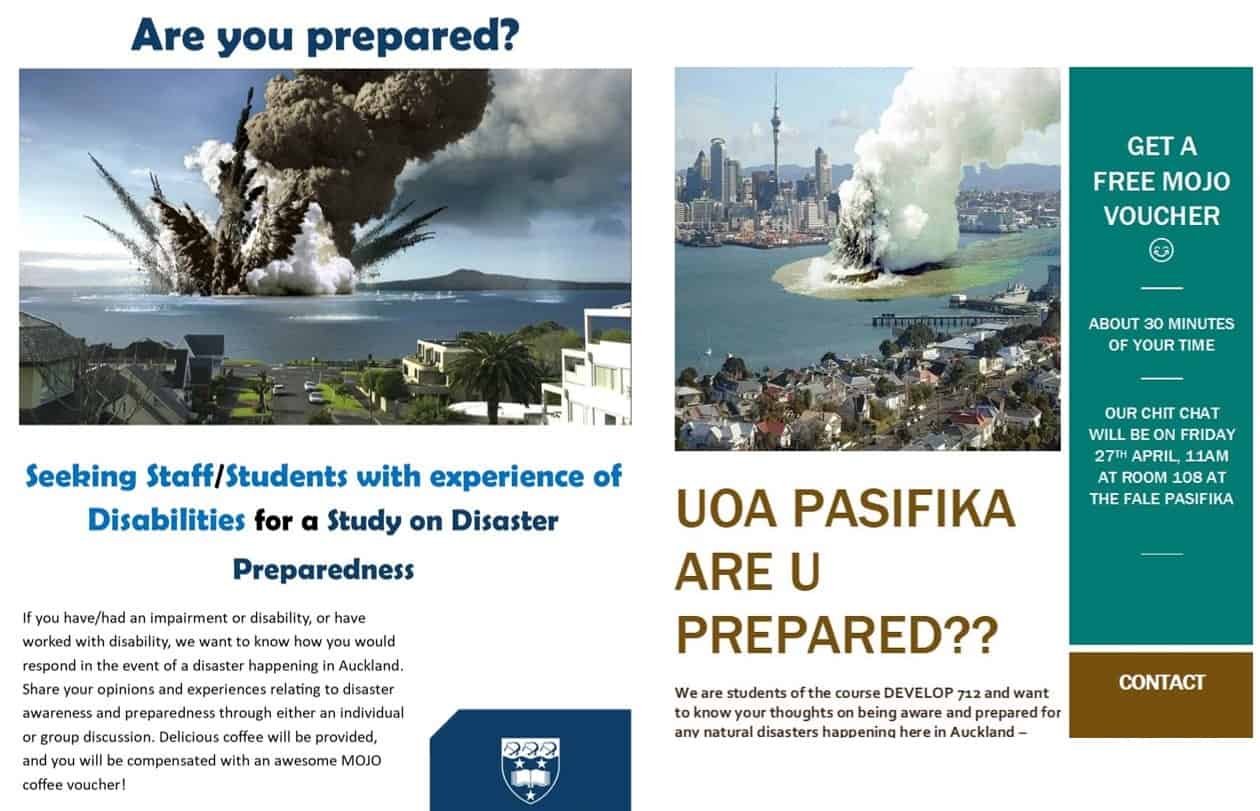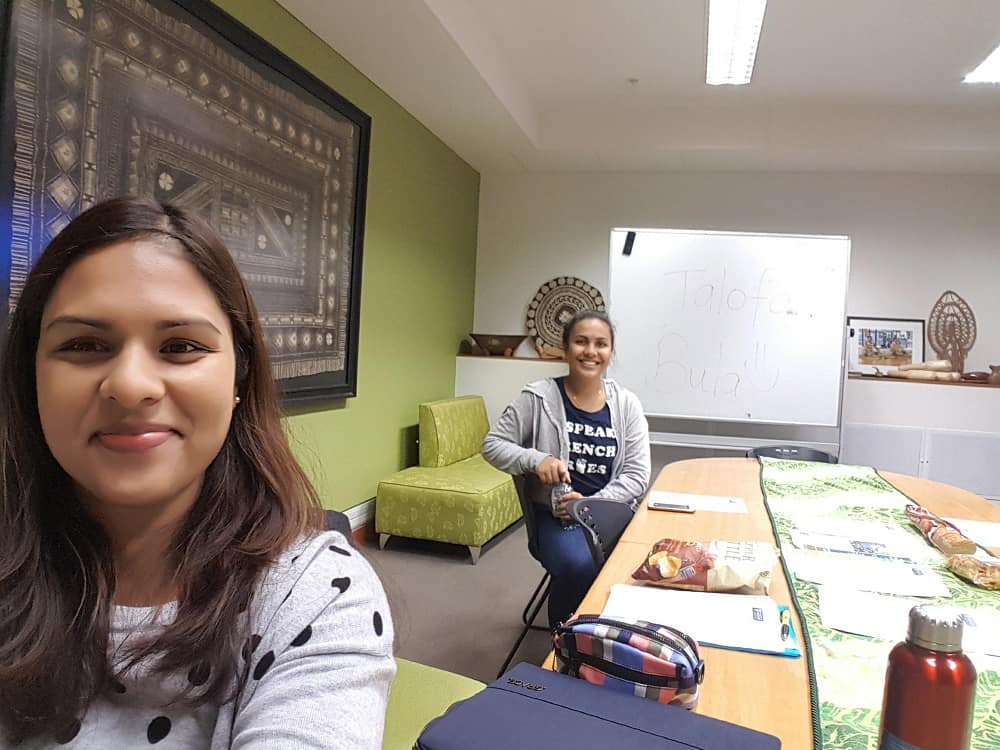Chaos on campus: Are students and staff at The University of Auckland ready for a natural hazard?
26/07/2018
Andreas Neef
How would students and staff of The University of Auckland respond if a major disaster struck the city? 13 postgraduate students set out to answer this question as part of the university’s Development Studies programme. Students formed small teams and conducted interviews and focus groups with their peers, as well as staff members tasked with health and safety procedures at The University of Auckland.
Auckland’s many hazards
New Zealand’s largest city is susceptible to severe weather events, including cyclones and tornadoes. Auckland is also built on an active volcanic field, exposing it to potentially disastrous volcanic eruptions. The city is vulnerable to earthquakes and associated tsunamis to a lesser extent too. In any of these events the risks to human wellbeing could be significant. In a recent example, Auckland has been affected by a string of localised disasters, such as flooding and severe storms which caused widespread power outages and disruption.
The research
With its student and staff body of more than 40,000 people, The University of Auckland (UoA) is one of the largest ‘communities’ in Auckland. But is the university prepared to respond to a catastrophic event, such as a volcanic eruption or a massive earthquake? To determine the level of awareness and preparedness among UoA students and staff, a group of 13 domestic and international students conducted 24 face-to-face interviews with students from diverse ethnic and disciplinary backgrounds, as well as five interviews with health & safety staff. They also convened five focus groups with 14 students and five staff members.
After obtaining ethics clearance from the UoA’s Human Ethics Committee, students received intensive training on qualitative fieldwork methods by the course director, Professor Andreas Neef, and two lecturers, Dr Jesse Hession Grayman and Dr Chanrith Ngin, all from the UoA’s Development Studies programme. Students demonstrated a great deal of creativity in designing flyers, posters and Facebook posts to recruit potential research participants. Six particular groups were addressed in this study: Pākehā students, Māori students, Southeast Asian students, Pasifika students, students with disabilities, and staff members with health & safety responsibilities.

Gathering quality information
Students experimented with different interview styles, ranging from Pacific-style research conversations (talanoa) to more structured types of interviews. One of the students, Caitlin Flannery, interviewed a deaf-mute student with the help of a sign-language interpreter. Amazingly, this interview was one of the richest in terms of information provided. Cailtin said, “For me, this interview was the most challenging, yet most rewarding part of the research process. By breaking down communication barriers through the use of a sign-language interpreter, I was able to gain an invaluable insight into what it’s like to prepare for, and experience disasters, as a deaf-mute student on campus.” All course participants agreed that the fieldwork practicum – albeit challenging in terms of time and social skills required – provided an invaluable opportunity to learn advanced research methods.

Talanoa is a traditional word used across the Pacific to describe the use of storytelling to share ideas, skills and experience. It allows for participatory, inclusive conversation.
Student preparedness
Most interviewed students reported that they felt relatively safe here in Auckland and that disasters weren’t something they were concerned about or discussed with friends. Yet, they also conceded that they would be completely unprepared in the unlikely event of a major disaster. Although all students were intimately familiar with social media and digital technology, they wouldn’t know how to get relevant information or where to seek shelter and support if a disaster struck.
Staff preparedness
Staff members responsible for health & safety at UoA knew quite well how to respond to a fire incident, but were generally uncertain about what would happen in the event of a major disaster. The UoA’s Crisis Management Team engages directly with external entities like Auckland Emergency Management at the strategic level, however this does not seem to translate into operational procedures. The university’s focus on fire evacuation may not prepare staff well for a natural disaster.
Results
Two students are currently employed as research assistants to further analyse interview transcripts and synthesise the findings provided in individual student reports. We expect to be able to present a research report to the UoA’s leadership team later this year.



